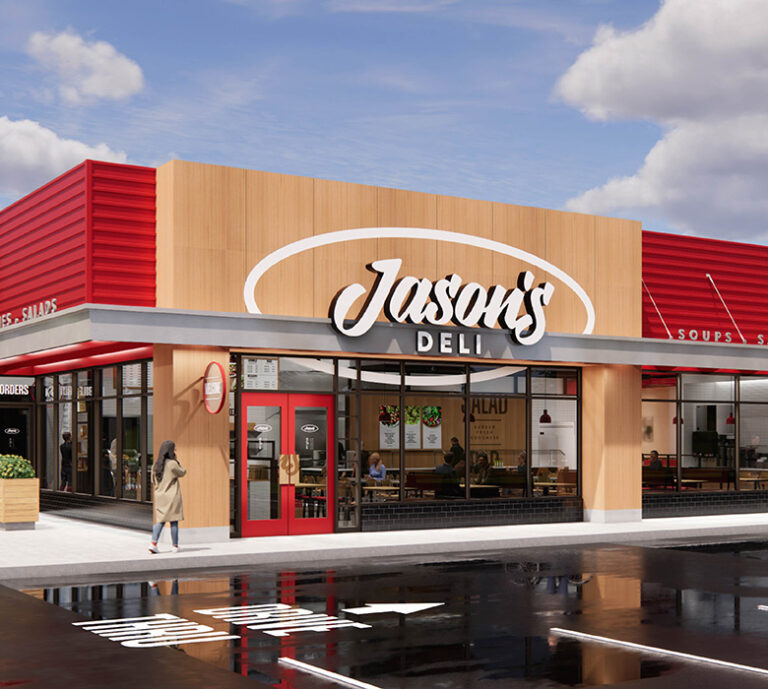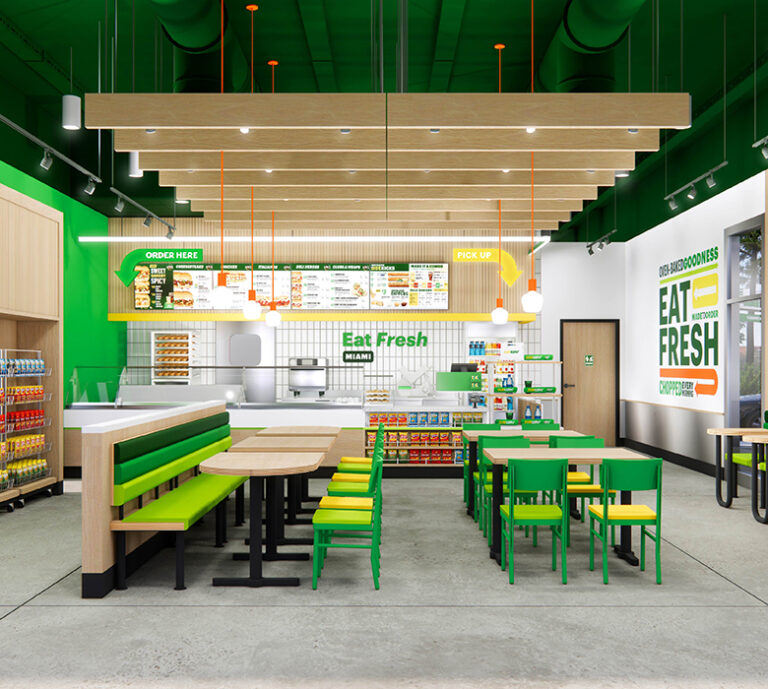×

See our latest work with Zaxbys, elevating their brand with a new look and environment that maintains their Southern heritage and hospitality.

A few weeks ago, our Executive Creative Director, Jamie Cornelius, had the chance to present at RestaurantSpaces, a 3-day event full of ideas, inspiration, and insights for leaders and innovators in the restaurant industry. She shared the stage with Juliana Strieff, Creative Design & Concepts Director at Panera, to discuss how the fast casual leader partnered with ChangeUp to develop their Next Gen prototype. Here’s more from their conversation about the process of designing Panera’s new restaurant:
Panera has always been a quiet innovator responding to ongoing changes in the restaurant industry (they were one of the first fast casual brands to implement kiosks and drive-thrus.) Even before the pandemic hit, they knew it was time to reimagine what convenience meant for today’s customers. Together, we designed a new bakery-café for today, while maintaining the unique parts of the brand that people know and love.
If the last two years have taught us anything, we know that change is inevitable. The 10-year prototype is now dead in favor of experiences that are built for change. Panera’s biggest challenge to build for this new future, was mapping their customer journey. Historically, Panera had focused on the on-premise journey, with restaurants around 4,500 sq. ft. and 120 seats. Introductions like mobile order pick-up shelves had simply been an additive response, rather than thought of as part of a holistic experience.
Designing Panera’s Next Gen restaurant allowed us to define the various customer journeys that exist and lay them out to better respond to the need for various footprints and formats. As a result, the restaurant was optimized to 3,500 sq. ft. with 60 seats, equipping Panera with the tools to look at additional formats, while still maintaining a simplified and intuitive journey.
And given the growing importance of adaptability in retail, we designed the prototype so its size can flex upward or downward depending on real estate. Yet, in every space, Panera’s kitchen footprint remains the same; allowing the front of house dining size and configuration to respond based on site constraints.
Panera has traditionally been known for its dine-in, stay awhile experience, with an emphasis on what they coined “Panera warmth”. Moving forward, it was important to create a variety of experiences that were rooted in what their customers know and love about them, while establishing ways to better serve them. The smaller footprint meant that the various seating nooks created by half walls and divider panels were now gone. Instead, the focus was put on details like materiality and texture to create warmth. Even the fireplace was reimagined to a modern, in-the-round experience that customers could gather around and charge their devices.
Another crucial change to the space was making Panera’s bakery the star of the show, given that their in-house baking was always something that set them apart from their competitors. So, we pulled the entire bakery forward so that it was visible to the customer. A mirror was even placed above the bakery case so that the delicious breads and pastries were reflected and could be seen throughout the dining room. Along with the bakery, we also opened the kitchen, so customers could see ingredients and the food preparation.
In discussing Panera’s on-premise experiences, their Chief Brand & Concept Officer, Eduardo Luz, stated in QSR, “Our guests use our cafes as an extension of their own homes. They cozily enjoy their meals by our fireplace. They love to watch our bakers create deliciousness right in front of their eyes and sample the latest creations.”
Convenience had been a priority for Panera long before the pandemic. Yet, many brands were reactionary, doubling down on the drive-thru in favor of frictionless experiences. But that’s table stakes.
While the drive-thru, along with a rapid order lane, was necessary for Panera’s Next Gen design, that alone would not optimize convenience. Geofencing now signals the restaurant that you’ve arrived and pulls up your order on screen upon arrival. And in order to compete with other restaurants on convenience, Panera’s extensive menu and customization options also required new technology. For instance, MyPanera, one of the best and most used apps in the industry, allows for preferred orders to be saved, while customers still earn personalized offers and points. Loyalty members can now order their meals via the app and pick-up in store or through the drive-thru. In addition, there are a variety of options for customers inside the café, as they can either wait in line, use a digital kiosk, pick up their takeout meal, or go directly to a table and use the app to order a contactless dine-in meal.
At the end of the day, “built for change” is not a one and done mentality. It means always looking at what’s next. And driving long-term growth means shifting your perspective and leading the change, not just responding to it.
This year’s RestaurantSpaces proved that brands must be willing to learn and try new things. Restaurants are working to be more adaptable, reimagining their prototypes and systems with more innovative solutions. Popeyes’ President, Sami Siddiqui, spoke on how they created six new prototypes in just 18 months. Inspire Brands’ VP of Design, Andrew Bellow, discussed the opening of Jimmy John’s first ever drive-thru only site. Restaurants are evolving, and ultimately, all brands must embrace, not fight, the ever-evolving landscape, regardless of what industry they’re in.


